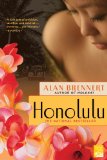Summary | Excerpt | Reading Guide | Reviews | Beyond the Book | Read-Alikes | Genres & Themes | Author Bio

Critics' Opinion:
Readers' Opinion:
First Published:
Mar 2009, 368 pages
Paperback:
Feb 2010, 464 pages
 Book Reviewed by:
Book Reviewed by:
Kim Kovacs
Buy This Book
This article relates to Honolulu
Korea became the object of Japan's colonial ambitions in the late nineteenth century, culminating in Japan's annexation of the region in 1910. Koreans, escaping the abuse and heavy taxation imposed by the Japanese, began immigrating to Hawaii. Approximately 6000 migrated to the islands between 1906 and 1910, 90% of whom were male. Most ended up as laborers on sugarcane plantations. The Japanese government prohibited emigration to Hawaii starting in 1910, but provided an exception for relatives of those already living in Hawaii.
A shortage of marriageable women, combined with the loophole in Japan's immigration laws, allowed for the rise of the "picture bride." A Korean man in Hawaii would provide a photograph of himself to a matchmaker, along with the appropriate fees and expenses. The broker would then arrange for a Korean woman to travel to Hawaii to be the man's wife. Arranged marriages were the norm for Asian cultures; the picture bride system was simply an extension of an existing practice.
The women had various reasons for leaving Korea. Some became picture brides hoping to provide financial assistance to their families. Others sought an escape from the limitations imposed on Korean women in traditional Confucian households. All were lured by promises of wealth and freedom. They formed an idealized view of life in Hawaii, encouraged by the marriage brokers.
The process of becoming a picture bride was arduous. The young women first had to obtain parental permission, which was seldom easy. The next step was to apply, in person, for a visa, followed by several rounds of physical examinations, and an English proficiency exam. Finally, they had to brave a 12-day ocean voyage to Hawaii, after which they'd be introduced to their intended spouse.
By all accounts, many of the women were shocked and disappointed upon meeting their new husbands. Almost all the photographs they'd received were deceptive in some way. Many were decades out of date, showing young, strong men instead of the middle-aged field hands the men had become. Some were photographed in rented clothing, standing in front of fancy homes or cars, implying wealth. Others used talc on their faces to make their tell-tale field-workers' tans less apparent. Few of the women returned to Korea despite their disillusionment. In addition to being unable to afford the passage, returning would shame themselves and their families.
One third of the women worked in the fields to augment the family income, earning fifty cents for a 10-hour work day, six days a week. They were paid just 66% of men's wages for demanding physical labor, and were additionally responsible for all the chores at home. Some supplemented their income by sewing, doing laundry, or cooking for the bachelors on the plantation.
Although their lives were hard, the Korean women proved quite resilient. Plantation owners had thought that having wives would make their male workers more content. The women, however, encouraged their husbands to leave the plantations for the better wages and living conditions in Honolulu. Being so much younger than their husbands, they were often widowed early and were forced to become self-reliant. Small groups of these women formed emotional and financial support groups, called kyes, which enabled them to assist each other in buying homes and starting businesses.
Filed under Places, Cultures & Identities
![]() This "beyond the book article" relates to Honolulu. It originally ran in March 2009 and has been updated for the
February 2010 paperback edition.
Go to magazine.
This "beyond the book article" relates to Honolulu. It originally ran in March 2009 and has been updated for the
February 2010 paperback edition.
Go to magazine.





The Funeral Cryer by Wenyan Lu
Debut novelist Wenyan Lu brings us this witty yet profound story about one woman's midlife reawakening in contemporary rural China.
Your guide toexceptional books
BookBrowse seeks out and recommends the best in contemporary fiction and nonfiction—books that not only engage and entertain but also deepen our understanding of ourselves and the world around us.